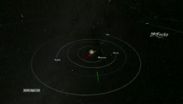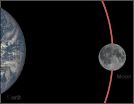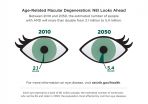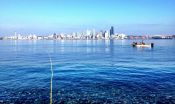(Press-News.org) On Sept. 13, 2015, the Solar and Heliospheric Observatory -- a joint project of the European Space Agency and NASA -- discovered its 3,000th comet, cementing its standing as the greatest comet finder of all time. Prior to the 1995 launch of the observatory, commonly known as SOHO, only a dozen or so comets had ever even been discovered from space, while some 900 had been discovered from the ground.
The 3,000th comet was originally spotted in the data by Worachate Boonplod, of Samut Songkhram, Thailand.
"I am very happy to be part of a great milestone for SOHO's comet project," said Boonplod. "I would like to thank SOHO, ESA and NASA for making this opportunity possible, including other fellow comet hunters who I have learned a lot from."
SOHO's mission is to observe the sun and interplanetary space, above Earth's atmosphere that blocks so much of the sun's radiation. From there, SOHO watches the solar disk itself and its surrounding environment, tracking the constant outward flow of particles known as the solar wind, as well as giant explosions of escaping gas called coronal mass ejections, or CMEs. In its two decades in orbit, SOHO has opened up a new era of solar observations, dramatically extending our understanding of the star we live with.
The telescope's comet prowess, however, was unplanned and has turned out to be an unexpected benefit. With its clear view of the sun's surroundings, SOHO can easily spot a special kind of comet called a sungrazer, because of its close approach to the sun.
"SOHO has a view of about 12-and-a-half million miles beyond the sun," said Joe Gurman, mission scientist for SOHO at NASA's Goddard Space Flight Center in Greenbelt, Maryland. "So we expected it might from time to time see a bright comet near the sun. But nobody dreamed we'd approach 200 a year."
SOHO's great success as a comet finder is dependent on the people who sift through its data - a task open to the world as the data is publicly available online in near-real time. A cadre of volunteer amateur astronomers dedicate themselves to searching the data via the NASA-funded Sungrazer Project. While scientists often search SOHO imagery for very specific events, various members of the astronomy community choose to comb through all the imagery in fine detail. The result: 95 percent of SOHO comets have been found by these citizen scientists.
"The people who have found comets represent a very broad cross section as the program is open to anyone who has interest," said Karl Battams, a solar scientist at the Naval Research Laboratory in Washington, D.C. Battams has been charged with running the SOHO comet-sighting website since 2003. "There are scientists, teachers, writers. We have even had two 13-year-olds."
More than just a celebrated bright vision in the night sky, comets can tell scientists a great deal about the place and time where they originated. Comets are essentially a clump of frozen gases mixed with dust. They are often pristine relics that can hold clues about the very formation of our solar system. On the other hand, if they have made previous trips around the sun, they can hold information about the distant reaches of the solar system through which they've traveled.
Watching these sungrazing comets also help us learn about our sun. Their tails of ionized gas illuminate magnetic fields around the sun, so they can act as a tracer that helps scientists observe these invisible fields. Such fields have even ripped off comet tails allowing astronomers to watch the lost tails blowing in the steady outpouring of solar particles streaming off our closest star. The tails act as giant windsocks in this solar wind, showing researchers the details of the wind's movement.
At almost 20 years old, the SOHO mission is a respected elder in NASA's Heliophysics System Observatory - the fleet of spacecraft that both watches the sun and measure its effects near Earth and throughout the solar system. SOHO is a cooperative effort between ESA and NASA. Mission control is based at NASA Goddard. SOHO's Large Angle and Spectrometric Coronagraph Experiment, or LASCO, which is the instrument that provides most of the comet imagery, was built by an international consortium, led the Naval Research Lab in Washington, D.C.
INFORMATION:
UNIVERSITY PARK, Pa. -- Asking just two questions may be able to help nurses and doctors quickly and easily identify delirium in hospitalized older adults, according to health researchers.
Delirium is a reversible cognitive condition that can be resolved if caught and treated early.
"Delirium can be very costly and deadly -- and with high-risk patients, time matters," said Donna M. Fick, Distinguished Professor of Nursing and co-director of the Hartford Center of Geriatric Nursing Excellence at Penn State. "Our ultra-brief two-item bedside test for delirium takes an ...
According to a NASA analysis of satellite data, the 2015 Arctic sea ice minimum extent is the fourth lowest on record since observations from space began.
The analysis by NASA and the NASA-supported National Snow and Ice Data Center (NSIDC) at the University of Colorado at Boulder showed the annual minimum extent was 1.70 million square miles (4.41 million square kilometers) on Sept. 11. This year's minimum is 699,000 square miles (1.81 million square kilometers) lower than the 1981-2010 average.
Arctic sea ice cover, made of frozen seawater that floats on top of the ...
Earth's gravity has influenced the orientation of thousands of faults that form in the lunar surface as the moon shrinks, according to new results from NASA's Lunar Reconnaissance Orbiter (LRO) spacecraft.
In August, 2010, researchers using images from LRO's Narrow Angle Camera (NAC) reported the discovery of 14 cliffs known as "lobate scarps" on the moon's surface, in addition to about 70 previously known from the limited high-resolution Apollo Panoramic Camera photographs. Due largely to their random distribution across the surface, the science team concluded that the ...
People with a genetic predisposition for age-related macular degeneration (AMD) significantly increased their odds of developing the blinding eye disorder if they had a history of heavy smoking and consistently did not exercise or eat enough fruits and vegetables, according to an observational study of women funded by the National Eye Institute, part of the National Institutes of Health.
Eating a healthy diet and getting exercise have been shown in earlier studies to protect against AMD, a leading cause of vision loss among people age 50 and older. Findings from this ...
A new computational model developed by scientists from the University of Chicago could help improve the allocation of U.S. biomedical research resources. The tool, called the Research Opportunity Index (ROI), measures disparities between resources dedicated to a disease and its relative burden on society. ROI identifies diseases that receive a disproportionate share of biomedical resources, which represent opportunities for high-impact investment or for the realignment of existing resources. It is designed to provide an unbiased, data-driven framework to help scientific ...
In the midst of ferry boats, container ships and tourists crowding Seattle's Elliott Bay, young salmon are just trying to get a decent meal.
The fish hatch in the rivers and streams that feed into Puget Sound and almost immediately rely on eating small organisms near the shore, including in the heart of Seattle's commerce-filled waterfront.
Though salmon share the busy Elliott Bay waters with boats and barges, scientists suspect built-up, "armored" shorelines and large piers may be the main culprits disrupting fish habitat. These artificial structures block light and ...
Reminders to take medication, delivered to patients via an electronic pillbox, may be able to improve adherence to tuberculosis (TB) treatment. The findings, reported this week in PLOS Medicine, are the result of a cluster randomized controlled trial by Shiwen Jiang of the Chinese Centers for Disease Control & Prevention, Katherine Fielding, of the London School of Hygiene & Tropical Medicine, and colleagues.
The study randomized 36 districts in the provinces of Heilongjiang, Jiangsu, Hunan, and Chongqing, China to receive one of four approaches to tuberculosis case management: ...
Selective serotonin reuptake inhibitor (SSRI) use is modestly associated with violent crime, according to a study published this week in PLOS Medicine. The cohort study, by Seena Fazel from the University of Oxford, and colleagues, showed in subgroup analysis that this association was evident in participants aged 15-24, but not significant for individuals aged 25 and older.
SSRIs are widely prescribed, but inconclusive evidence links SSRI use with violent behavior. In this study, Fazel and colleagues compared the rate of violent crime while individuals were prescribed ...
Giving electronic reminders to tuberculosis (TB) patients in China can reduce the amount of medication doses they miss by half, according to new research published in PLOS Medicine.
Researchers from the London School of Hygiene & Tropical Medicine, UK, and the National Center for Tuberculosis Control and Prevention, China, conducted a trial with 4,173 patients from the provinces of Heilongjiang, Jiangsu, Hunan, and Chongqing. Patients either received text message reminders, an electronic medication monitor, both, or no reminders for their six month treatment period.
Patients ...
Measuring how religion affects a person's political attitudes and behavior can provide powerful insight to everyone from pundits to presidents.
Now there's a new strategy to gather better, more nuanced perspective on that religious influence than ever before, developed by University of Cincinnati researchers.
UC's Andrew Lewis and Stephen Mockabee presented research titled "Measuring Biblical Interpretation and Its Influence on Political Attitudes" at the American Political Science Association's annual meeting earlier this month in San Francisco. The association serves ...




